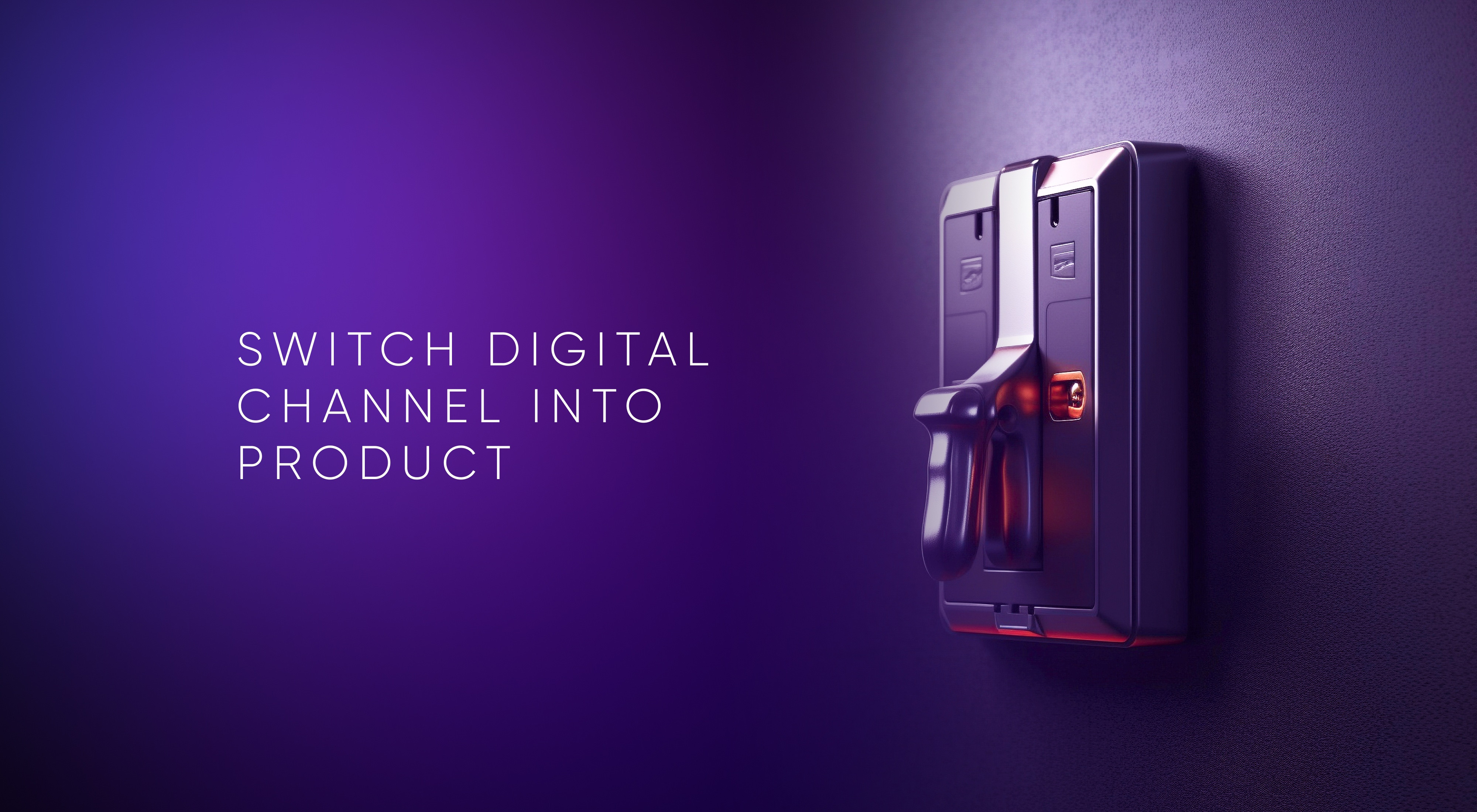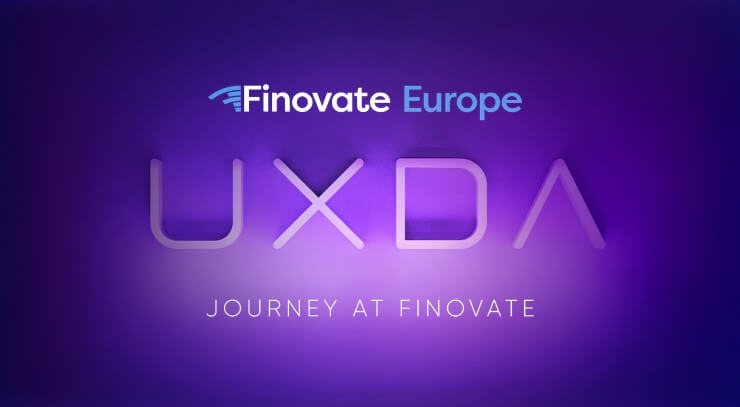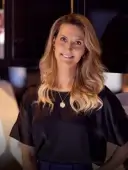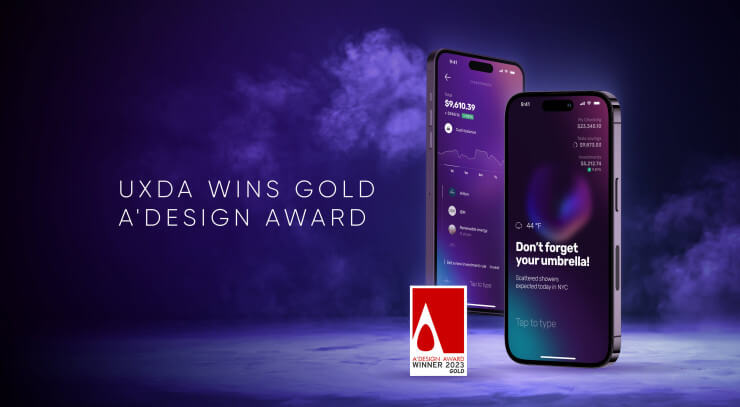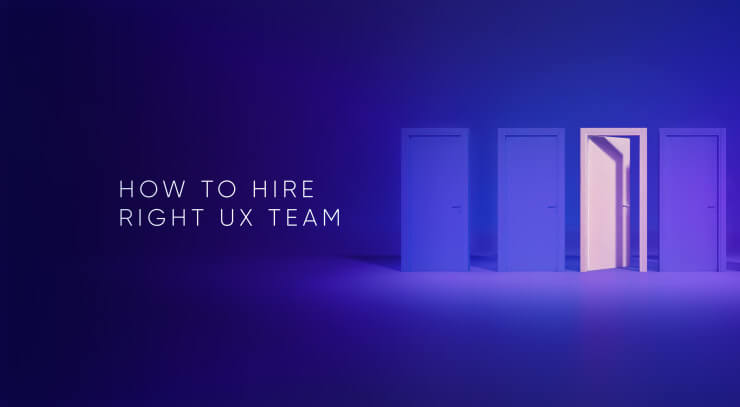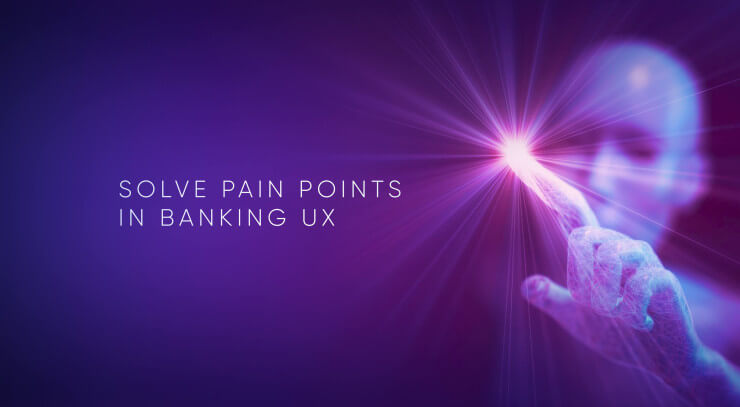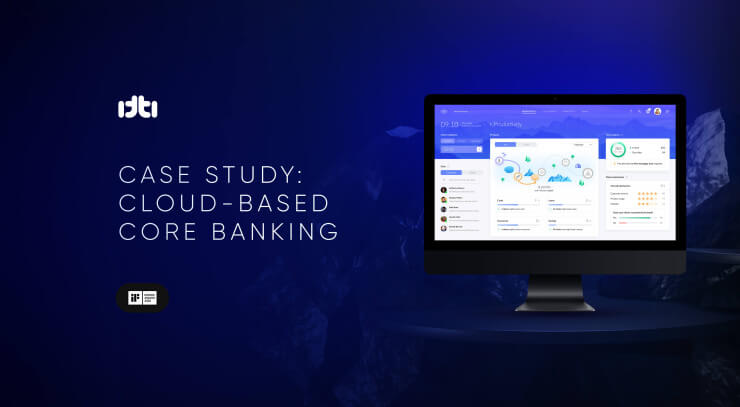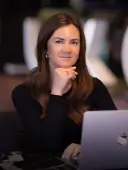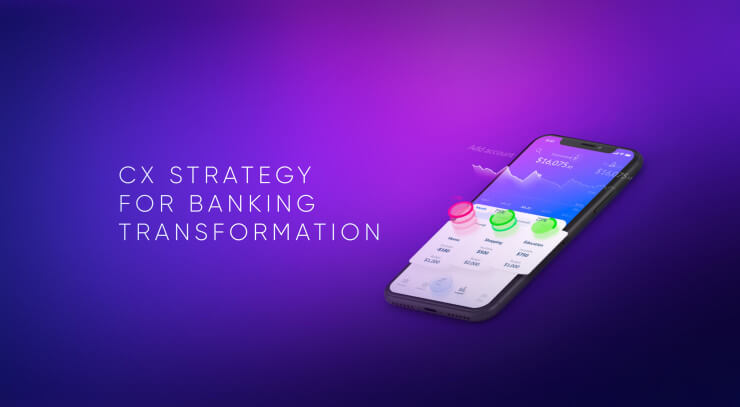Building a digital service is a must, but a nice-looking financial app is not enough. It has to match the digital business model and customers’ expectations to strengthen your brand for the future. Unfortunately, this is difficult to achieve with low costs and short-term design sprints. Long-term UX could help here. By embracing a UX marathon mindset, designers and product specialists can reshape the narrative, driving UX from the periphery to the core of business decisions.
Sprint vs. Marathon: The UX Design Analogy
There is one similarity in the world of sports and design. I'm talking about two approaches — sprinting and marathon running.
Picture two renowned athletes, Usain Bolt and Eliud Kipchoge. Bolt, the world's fastest sprinter, is recognized by the majority of people. He holds the 100-meter sprint world record with an astounding time of 9.58 seconds. This sport is fascinating; the sprint is usually short and spectacular.
Kipchoge, on the other hand, is lesser-known because marathons are long and not so many people are interested in watching them. Kipchoge became the first person to break the two-hour marathon barrier, previously considered impossible.
Just like sprinters and marathon runners, product designers face a choice between two approaches: short-term design sprints and long-term UX marathon. Design sprints in financial organizations focus on solving immediate problems, akin to dashing from Point A to Point B. It caters to the fast-paced nature of the digital industry, aiming to address short-term goals such as conversions and delivers impressive results in fun and short iterations. That’s why it is so popular among managers.
On the other hand, long-term UX emphasizes a broader perspective, solving complex business problems and ensuring consistency across digital ecosystem. It aims to provide lasting value to users and brands, focusing more on loyalty and holistic brand experience. But the main difficulty here is that it requires the integration of design and a customer-centered approach at the company's executives board, core strategy and culture level.
Anyone can run the 100 meters for fun, but a marathon requires serious preparation and self-transformation. Therefore, design sprints are used in 40% of companies, and design strategy in only 5%.
Despite the allure of the sprinting approach, evidence shows that long-term UX marathon yields more substantial business impact. According to a report by Invision, companies that practice a design-mature strategic approach demonstrate more profound results with a higher impact on revenue and time-to-market. After all, every successful business is not a sprint but a long-term marathon.
While the design sprints in banking can be effective for quickly addressing specific design challenges and generating solutions, there are several potential drawbacks:
Narrow Focus
Design sprints are often centered around solving a single, immediate problem. This approach might lead to a myopic view that neglects the broader user experience and long-term goals of the digital financial product.
Lack of Holistic Strategy
Long-term success requires a comprehensive strategy that aligns with business goals, user needs, and market trends. Design sprints may not allow for the in-depth analysis needed to develop a holistic and adaptable strategy.
Neglecting User Research
Design sprints prioritize speed, which can result in limited user research. Neglecting thorough research may lead to solutions that do not accurately address user pain points or provide lasting value.
Limited Iteration
In a sprint, the emphasis is on quick solutions, which can hinder the iterative process crucial for refining and optimizing a digital financial product over time.
Short-Term Fixes
Design sprints might lead to short-term fixes that do not address underlying issues. This could result in a series of band-aid solutions rather than a cohesive, long-term product strategy.
Incompatibility with Complexity
Financial products are often complex and interconnected. Design sprints might struggle to tackle multifaceted challenges that require a more nuanced and integrated approach.
Inadequate Testing
Design sprints involve rapid prototyping and testing, but this might not adequately simulate real-world usage scenarios. Complex financial products may require more extensive testing to ensure functionality, security, and regulatory compliance.
Lack of Alignment
Successful financial products require alignment with regulations, compliance standards, and industry best practices. Design sprints might not give enough time to ensure these aspects are thoroughly considered.
Risk of Short-Term Wins
While design sprints can generate quick wins, they may not necessarily contribute to the sustained success of the product. Long-term success requires a strategic and cohesive roadmap.
Limited User Involvement
While sprints often involve user input, they might not offer enough opportunities for continuous engagement and feedback, which are crucial for financial products.
Change Management
Financial products often require changes in user behavior or processes. A sprint may not provide adequate time to address change management aspects required for long-term adoption.
Unfortunately, this pursuit of short-term advantage may lead to poor UX. There is a lack of unified digital strategy, and the values, philosophy and mission of such a financial brand are not implemented in the digital space. Very often, they try to copy the best solutions of their competitors. So, the digital identity and ecosystem are formed in chaos without specific goals and strategy. As a result, such companies’ digital services are inconsistent and frustrate users.
Sometimes a company launches a new app but doesn't even share users’ data among the company's other services, so they have to fill out the same form repeatedly. While using an iPhone, for the similar task, they only need to push the side button twice.
Or a company launches a new app but completely ignores customer requests for help in their support center or social media, ruining customer experience in the long run. Financial services have the longest life cycle in the market. Some families have been customers of their bank for generations. So, any issues in the digital experience are very impactful in the long run.
Read more: Banking Innovation Only Thrives in Design-Mature Financial Organizations >>
What Makes Long-Term UX Different?
Design-mature financial companies aim to build a consistent ecosystem of digital products that will provide customers with the desired value through a pleasant and exceptional experience. Therefore, these companies are interested in conducting UX studies, product usability audits and constant customer feedback collection to create compelling digital strategy.
Such companies believe that product design does not end after the development and launch of the digital service application. The product must be constantly improved and updated based on user feedback. For example, according to research by Peter Ramsey, challenger banks update their applications every six days, while some banks only do this once every 50 days.
Here are some more differences:
Timeframe
Long-term UX focuses on constantly improving the user experience over the years, whereas short-term UX tries to achieve immediate results, ignoring long-term consequences.
Scope
Long-term UX strategy covers a wider range of product aspects, including strategy, purpose, branding, product roadmap, user research, testing, customer needs and value to customers, whereas short-term UX focuses mainly on immediate conversion rate optimization.
Goal
The goal of long-term UX design is to create a consistent digital ecosystem with the best possible user experience that establishes an emotional bond and trust with users. Conversely, the goal of short-term UX is to impact specific design issues and customer behavior in the quickest way possible.
User Feedback
Long-term UX incorporates user feedback into its business operations improvement process, whereas short-term UX may only consider feedback in the context of fast design optimization.
Prioritization
Long-term UX prioritizes overall user satisfaction and consistently pleasant user experiences, while short-term UX prioritizes quick wins and immediate profit increases.
Cost
Implementing long-term UX may require a larger investment upfront but can lead to cost savings over time, with constantly growing customer satisfaction. Long-term UX is an ongoing investment, while short-term UX is limited by a tight budget.
Customer Lifetime
Financial products often have a longer customer lifespan compared to other types of products, so long-term UX is aimed to retain this relationship and trust, while short-term UX may sacrifice loyalty for short-term gain.
Brand Reputation
Long-term UX enhances the reputation of the financial brand, while short-term UX is not connected to brand identity and uses template solutions that can even damage its reputation.
Regulations
The financial industry is highly regulated, so a long-term UX design takes regulations into account and minimizes the risk of penalties for business or damage for users, while short-term UX often ignores connection between product and business.
Competitors
A consistent long-term UX approach helps differentiate a financial product from competitors and increase customer loyalty, while short-term UX quickly provides a standard solution for a fast product launch.
Strategies for Long-Term UX
As we can see, second-type companies perceive the design of their financial services in a completely different way, giving special attention and significant investments to it. They implement long-term UX and use a number of comprehensive strategies to do so:
Purpose-driven business
People love products that strive to be more. A meaningful purpose is at the heart of successful companies’ growth strategies. Their brand values, mission, and vision to benefit society are expressed through the company's products and its user experience. Business for good gets massive support in the digital space.
Customer-centered approach
They clearly define the types of users who will use the financial product to ensure that the UX meets the needs of the target audience. They conduct user research to understand user behavior, preferences and pain points, as well as continuously collecting and incorporating user feedback into the design process. They regularly test the product with users and constantly iterate the product design based on feedback and user behavior.
Design thinking
They implement principles of design thinking across the company to identify and solve problems in new and innovative ways, leading to improved efficiency. The main value of design thinking is that it can help to create more satisfying experiences for customers, leading to increased loyalty and revenue for the financial company.
Design operations
The role of digital experience in building long-term customer relationships requires creativity, empathy and design innovation. DesignOps helps integrate the design team's workflow into the broader product development and delivery context. To benefit from DesignOps, banking companies need to implement a design-driven ecosystem with a set of standardized processes, methods and tools that will support and evolve the design approach in the organization, effectively scaling the product.
Digital ecosystem
Often, many incumbents digitize their products separately. This causes high fragmentation within the financial customer experience as the usability, information architecture and the interface itself differ in the same company products. Furthermore, having different departments working on their own product leads to fragmentation, because users expect their banking services to be connected through a holistic flow rather than discrete fragments. To avoid fragmentation, the departments of successful financial brands work together, constantly seeking ways to improve the customer experience across all channels and create a proper UX/UI design system and digital strategy.
Constant innovations
We are seeing the emergence of a huge number of promising new technologies, such as blockchain, decentralized finance, embedded finance, conversational AI such as ChatGPT, the metaverse and others. All of them can dramatically change the rules of the game in the financial industry at any moment. Therefore, it is necessary to constantly monitor how consumers adopt these innovations and look for ways to improve your product with them in the long term. Digital product needs a roadmap that outlines the long-term goals and objectives for the product development through innovations. This will help to ensure that innovation opportunities are aligned with the overall business strategy.
Digital authenticity
You will easily spot their products among the thousands of identical digital products devoid of personality because they stand out for their uniqueness. Second-type companies match their digital product’s personality with the essence of their financial brand because authenticity is a set of emotional and visual characteristics through which users perceive a brand and its product. Every tiny detail should express it: language, design, layout, style, app architecture and functions. They create a design system that defines the look and feel of the product in line with their brand, including typography, color palette and other visual elements. This will ensure consistency across the digital ecosystem and help to build a strong brand communication.
Storytelling
They use the story to find the right answer and deliver it in an easy way. This answer becomes the main value they provide to the customer, and all the communication and products build their story around this. The powerful story ties the brand and product assets together and fills them with human experience and imagination. A story narrative guides and supports leading companies growth for years, constantly sharing their purpose, values and personality in a clear and emotionally engaging manner.
Open mind
The best customer experience results in a significant increase in profits, but this is not that easy. The main pitfall is the “experience gap.” It is the negative gap between a customer's expectations and their experience with a digital financial service. The main issue, however, is that the true experience gap is not so easy to detect. Even if company leaders and employees suspect something is wrong, it requires to stay alert and open-minded to detect and bridge the customer experience gap.
Digital-driven culture
Financial companies with a digital-driven culture often live with innovative technologies to provide customers with a higher value than competitors do. Being obsessed with digital execution, their employees bring every element of the user experience to perfection. They realize the maximum potential of their business model, product and market offer through the integration of a long-term UX design approach into the company's culture DNA. Thanks to this, they improve digital assets to build the most trusting relationships with their digital customers, and, in case of any business difficulties, they receive support and assistance from their fans.
Key to Long-Term UX
As we found previously, the way financial brands perceive their digital service can have a huge impact on the user experience they design and, therefore, their profit and success in the long-term. And these approaches are so different because there are two ways to view digital service: as a channel or as a product.
One of the primary distinctions between viewing digital financial service as a channel and as a product is how it is integrated into the overall business strategy. When perceived as a channel, digital offerings are frequently viewed as an afterthought rather than a core offering or a key business component. Digital offerings are seen as a way to digitally deliver the same financial services they already provide through traditional channels, such as branches and call centers.
Such financial companies often allocate smaller funds and fewer experts to their digital offerings, leading to choosing a short-term user experience design. This has led to outdated technology, clunky user interfaces that are difficult to use, slow load times, confusing navigation and fewer innovative features. They often lack the intuitive design and seamless user experience that customers have come to expect from digital products, such as those offered by such digital leaders as Apple. Customers may become frustrated and turn to more user-friendly banks, financial institutions (FIs) or Fintechs, leading to a loss of market share and profitability for such a company.
Conversely, when financial companies, including banks, perceive digital as a product, they approach it with a high focus and dedication as a key component of their operations. As main business asset, it receives the necessary resources and efforts to ensure that it is constantly improving and providing the best possible user experience for customers to stay ahead of the competition. After all, customers do not perceive the bank as a range of different services, they generally perceive the financial service using a mobile application, desktop, and ATMs as parts of overall company service.
What is Digital Product Design in Banking
Digital product design in banking is about creating and designing digital financial products and services that are user-friendly, visually appealing, and effective in meeting user needs and business goals. It combines various disciplines such as user experience (UX) design, user interface (UI) design, interaction design, Design Thinking, psychology, and business analytics, to create a cohesive and engaging user experience.
Digital product designers in banking work on a wide range of projects, including websites, mobile apps, software applications, and other digital interfaces. They are responsible for understanding user needs, conducting user research, creating wireframes and prototypes, and ultimately designing the visual and interactive elements of the product.
The process of digital product design typically involves the following stages:
- Research and Discovery
Understanding the target users, their goals, and the context of product usage through user research, market analysis, and competitor analysis.
- User Experience (UX) Design
Defining the information architecture, user flows, and interaction models of the product to ensure a seamless and intuitive user experience.
- User Interface (UI) Design
Designing the visual elements of the product, including typography, color schemes, icons, and layouts, to create an aesthetically pleasing and visually consistent interface.
- Prototyping and Testing
Creating interactive prototypes to validate design concepts and gather feedback from users. Iterative testing helps identify usability issues and refine the design.
- Visual Design
Creating high-fidelity visual designs that incorporate the brand identity, visual hierarchy, and aesthetics to enhance the overall user experience.
- Collaboration and Communication
Collaborating with developers, stakeholders, and other team members to ensure the successful implementation of the design. Clear communication of design decisions and rationale is essential.
- Iteration and Improvement
Continuously evaluating and refining the design based on user feedback, analytics, and evolving business needs to create a product that evolves and improves over time.
Digital product design aims to create customer-centered products that are not only visually appealing or just functional but are primarily delightful to use, connected to brand strategy, and purpose-driven. The goal is to solve user problems, provide value, and deliver a positive user experience through effective design strategies.
10 Ways to Switch from Channel to Digital Financial Product
One company that understands the importance of viewing digital as a product, and the best on the market in terms of long-term UX, is Apple. From the innovative and user-friendly interface of the iPhone to the sleek and functional Apple Watch, every digital interface at Apple is designed with the customer experience in mind. Apple invests heavily in research and development to design the best possible experience in the market and, every 6 months, launches new versions of its key products to stay ahead of the competition. As a result, Apple's products are widely regarded as the best in the market, and customers are willing to pay a huge premium for them.
However, there are a lot of smartphones on the market that are built as channels to perform standard functions, such as calls, internet browsing and checking emails, with a cost of around $100. Apple charges 10 times more per device, yet 240 million iPhones were sold in 2021. Their popularity is attributed to their advanced features, the unique Apple digital ecosystem, innovative technologies, amazing convenience and a certain lifestyle and sophisticated design rather than standard and simple functionality. So, it all comes down to the delightful, long-term user experience.
To achieve the same results, here are ten key areas where it is important to switch digital financial service approach from channel to product:
1. Strategy
Channel: in this case, digital banking is often given a lower strategy priority compared to other business items. Invest once and then use it for many years without constant improvement.
Product: if it becomes a top priority in the financial company's strategy, efforts are made daily to improve the user experience for the customers.
2. Investment
Channel: banks or other financial companies tend to invest less in digital design and development, using it only to deliver existing services as they go. This may lead to a poor user experience and a lack of customer-centricity and innovation.
Product: a business is more likely to invest in digital improvement and advancement, leading to a better user experience and a competitive advantage by hiring top talent, investing in state-of-the-art design and technology and conducting research.
3. Focus
Channel: a digital offering is frequently treated as a separate marketing activity, emphasizing digital communication with customers. This can result in a lack of focus and coordination, making it difficult for financial institutions to provide a consistent and seamless user experience across all digital services.
Product: digital is integrated into the core of the FI's operations, ensuring that all teams collaborate toward a common goal of providing a comprehensive and user-friendly experience beyond simple transactions, thus addressing the full range of customer concerns.
4. Innovation
Channel: digital is often viewed as a necessary evil to replicate existing services in an online format rather than a path for innovation and competitive advantage. This can make it difficult for the financial company to stay ahead of the curve and deliver unique and brand-related digital experiences for its customers.
Product: the company is more likely to invest in innovation, make regular product updates and take risks to provide customers with a unique and valuable digital solution.
5. Customer satisfaction
Channel: the digital experience is often an afterthought, and customers use clunky, outdated digital services that are difficult to navigate, resulting in frustration.
Product: it drives financial brands to respect and hear its customers, conduct research and meet their needs. This results in designing seamless, intuitive digital services that are easy and enjoyable to use, leading to more satisfied customers and better business results.
6. Employee engagement
Channel: executives and other employees do not prioritize and are not so involved in the development and improvement of digital services. As a result, banks and financial institutions may struggle to design and deliver a high-quality digital experience.
Product: employees are focused on product goals and mission, are more likely to be invested in its success and are motivated to contribute to its development and improvement.
7. Cross-functional collaboration
Channel: digital is frequently perceived as a separate marketing activity from other areas of the financial organization. This results in a lack of collaboration and coordination, making the delivery of a seamless and integrated user experience difficult.
Product: digital is integrated into the core of the business operations, requiring cross-functional teams, representatives from different departments and stakeholders to work together and collaborate on developing digital offerings, putting customers at the center.
8. Decision-making
Channel: customers' usage, behavior, needs, patterns, pain points and feedback are not collected and analyzed by financial institutions. This makes informed decisions about digital offerings difficult, potentially leading to poor outcomes.
Product: financial brands have access to user data to drive decision-making that enables them to deliver a more customized and tailored digital experience.
9. Competition
Channel: digital is often seen as a commodity that every bank or other financial company must offer, and, to differentiate it, a completely new digital service must be invented. For such financial brands, it is difficult to stand out in the market with their core service.
Product: a financial brand is focused on delivering faster and having more engaging and enriched experiences, primarily with core digital products, enabling them to differentiate themselves from their competitors.
10. Market leadership
Channel: it is difficult for such a financial brand to become a leader in the modern financial industry driven by digital disruption, because it does not view digital as the main market in which to compete.
Product: the product-driven financial brand hugely invests in the outstanding design and development of its digital ecosystem, allowing its brand to stay ahead of the curve and set the industry standard.
Conclusion
It is time for all financial companies to stop viewing digital as a channel and start treating it as the product it truly is. By treating digital as a core product, prioritizing it, investing in it and allocating the necessary resources, efforts and people to its design, development and improvement, financial companies can ensure long-term UX.
This, in turn, will lead to great customer satisfaction and improved business profit, allowing the company to stay ahead of the competition and set the standard for the industry's future in the long-term.
Get UXDA Research-Based White Paper "How to Win the Hearts of Digital Customers":
 If you want to create next-gen financial products to receive an exceptional competitive advantage in the digital age, contact us! With the power of financial UX design, we can help you turn your business into a beloved financial brand with a strong emotional connection with your clients, resulting in success, demand, and long-term customer loyalty.
If you want to create next-gen financial products to receive an exceptional competitive advantage in the digital age, contact us! With the power of financial UX design, we can help you turn your business into a beloved financial brand with a strong emotional connection with your clients, resulting in success, demand, and long-term customer loyalty.
- E-mail us at info@theuxda.com
- Chat with us in Whatsapp
- Send a direct message to UXDA's CEO Alex Kreger on Linkedin


